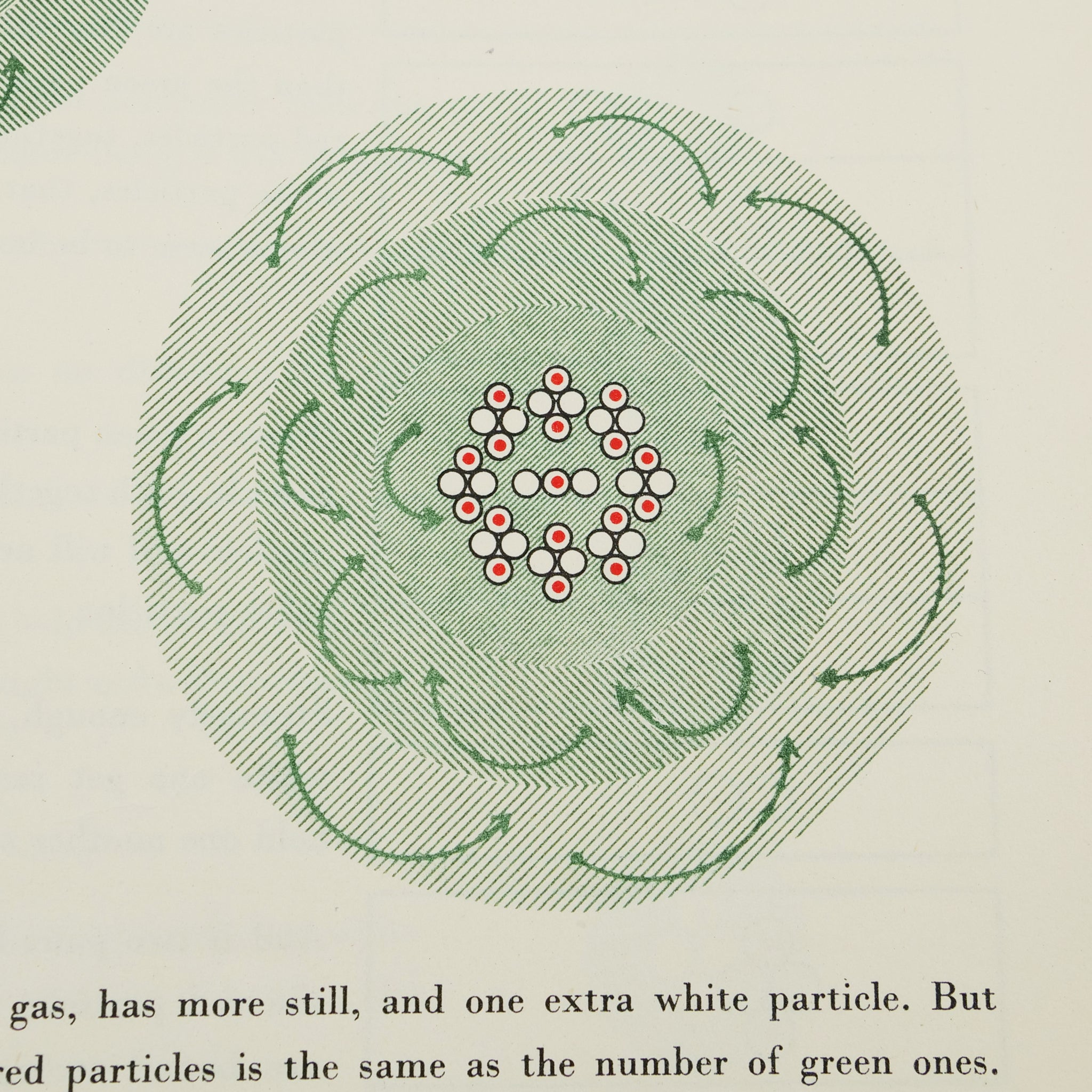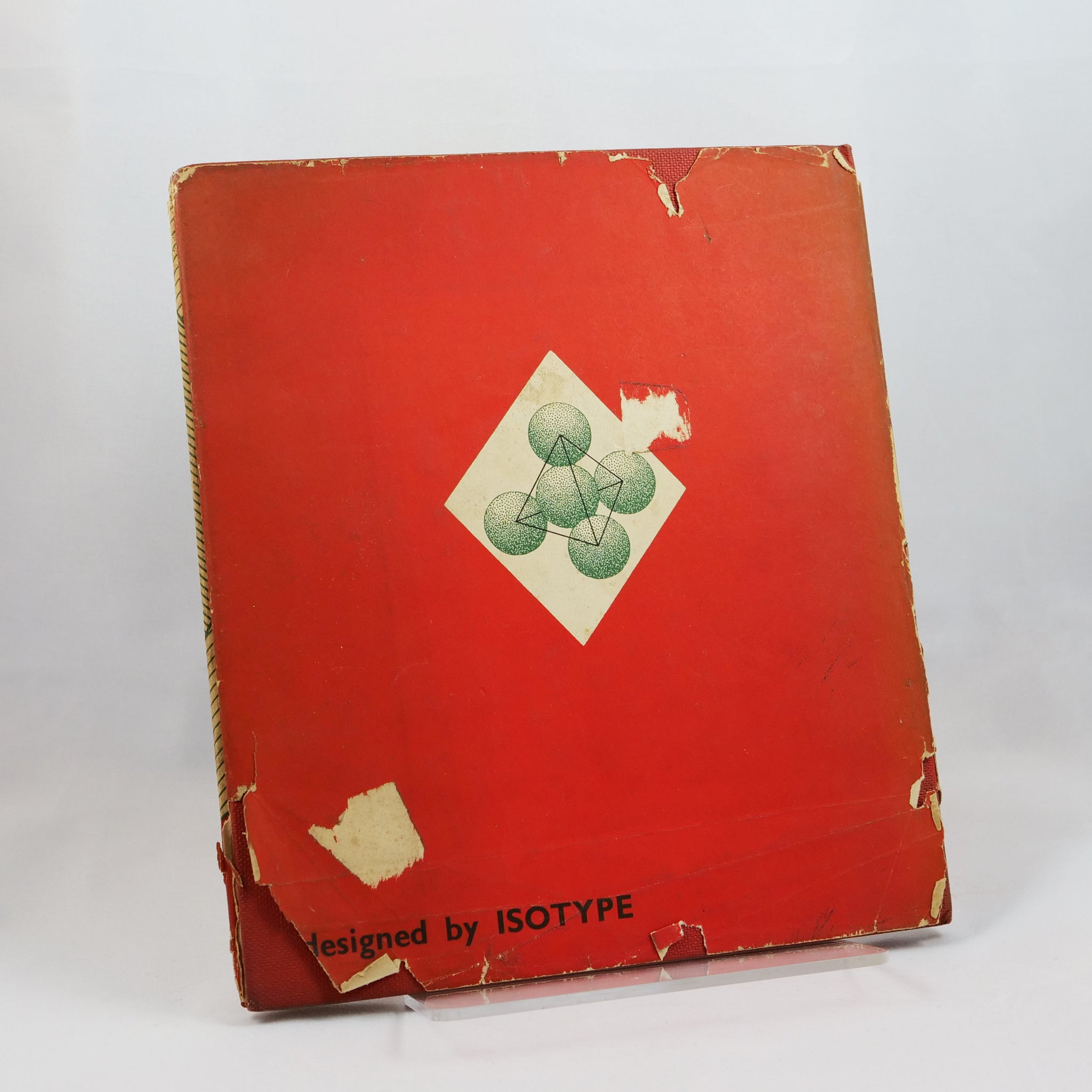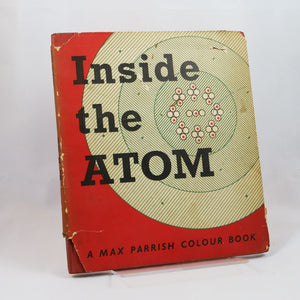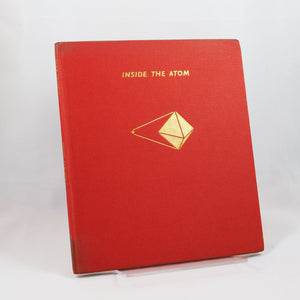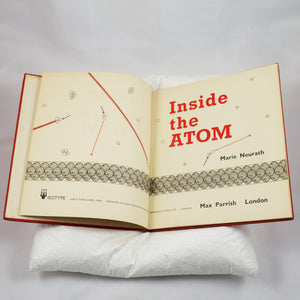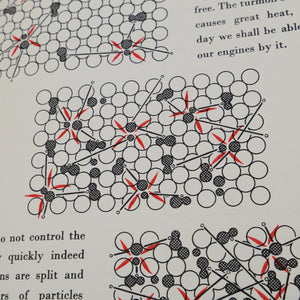Neurath, Marie | Inside the Atom
Sold Out
-
RESERVED First edition, first impression of this important work of science illustration by data-visualisation pioneer Marie Neurath (1898-1986).
Neurath, together with her husband Otto and their colleague Gerd Arntz, was one of the founders of Isotype, a simplified visual method of displaying complex information to the public. First developed in the 1920s, and originally known as the Vienna Method of Pictorial Statistics, the goal of Isotype was ”to cross national and social divides in a time before widespread global communication. To do that, Isotype went back to basics and stripped away all things unnecessary, illogical, or alienating—and in doing so, helped to establish some of the core principles of graphic design. Today, Isotype’s legacy can be seen everywhere from newspapers and textbooks to signage, transit maps, interfaces, and emojis” (Inglis, “Meet Marie Neurath,” AIGA Eye on Design, September 17, 2019).
Marie Neurath “was a remarkable practitioner” who “researched, calculated, and co-designed nearly every Isotype ever created, from the early days in Vienna in 1925 all the way to when she retired in 1971” (Forrest, “The Missing Legacy of Marie Neurath,” Medium, January 20, 2020). She described her role as that of the “Transformer” of data, writing that “From the data given in words and figures, a way has to be found to extract the essential facts and put them into picture form. It is the responsibility of the transformer to understand the data, to get all necessary information from the expert, to decide what is worth transmitting to the public, how to make it understandable, how to link it with general knowledge or with information already given in other charts. In this sense, the transformer is the trustee of the public” (Neurath, The Transformer, 2009).
Marie continued the work after Otto’s death in 1945, becoming best known for the series of children’s books she published over the next twenty years. “In children’s educational books Marie found an ideal place to put Isotype’s methods into practice. Young readers were more engaged by pictures than words, and this focus on the visual meant these books were easily translated and published abroad, fulfilling Isotype’s original aims of being truly international” (Inglis).
-
London: Max Parrish, Isotype. Printed by Graphic Reproductions Ltd., 1956.
Quarto. Original red cloth-patterned boards, titles to spine and upper board, and crystal design to upper board gilt. 3-colour offset lithography. Corners bumped, spine rolled, boards darkened corresponding to jacket chips, contents toned with occasional small spots, spotting to edges of text block. A good copy in the dulled and marked jacket with chips from the corners and ends of the spine, and a closed tear running halfway up the spine panel.





